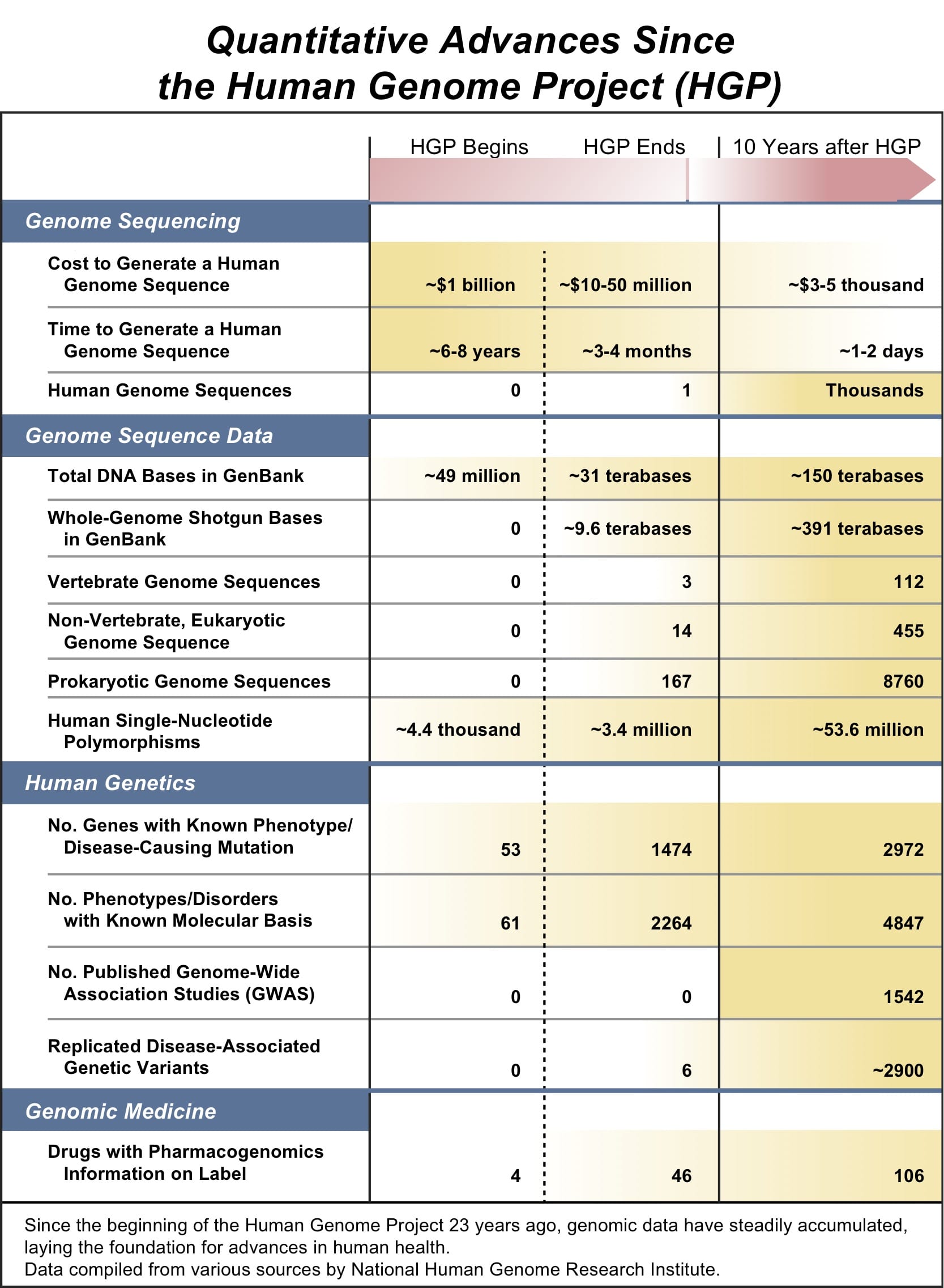
This month marks the tenth anniversary of one of the greatest scientific achievements of our time when in 2003 researchers decoded the last of the three billion letters that make up the human genome.
Dr. Eric Green, director of the National Human Genome Project, spoke with reporters a week ago saying that the milestone might not be breaking news, but it does warrant a few moments of reflection.
Green noted the breadth of technical, scientific and medical advances made in the last ten years.
For Green, those advances have set the stage for what will become the age of genomic breakthroughs. We’ve already made great strides that have changed people’s lives in both big and small ways, he said.
“By improving our understanding of basic genome biology, the genomic underpinnings of disease and genomic medicine, the field gets ever closer to its ultimate goal – improving human health through genomics research,” he said.
Pointing to cancer, as an example, Green said genetics has transformed how it is diagnosed and treated. The astounding drop in the cost of sequencing has opened the way for doctors to easily use genetic information when treating patients. In the case of breast cancer, doctors now regularly sequence tumors and if they find that the tumor is positive for a genetic signature known as “HER-2” they know that their patient will benefit from the drug Herceptin. And in the case of prescription drugs, the FDA now recommends the use of genetic testing in prescribing more than 100 medications, to help ensure that the right amount of the right drug is prescribed to the right patient.
Some of the most dramatic breakthroughs in genetic science have been in the treatment of rare diseases. While rare diseases are individually rare, when you add up all the people who suffer from a rare disease it amounts to about one in ten, or about 30 million people in the United States. Doctors now know the genetic underpinnings of almost 5,000 rare diseases, more than twice as many as a decade ago.

And the science has had tremendous impact on many lives. Consider the case of Nic Volker, a 4 year-old Wisconsin boy suffering from a mysterious life-threatening disease that had required multiple painful surgeries. His story, written about eloquently by Milwaukee Journal Sentinel reporters Mark Johnson and Kathleen Gallagher, had a happy ending after doctors worked tirelessly to identify the genetic mutation causing the problem. Knowing the mutation allowed them to come up with a possible treatment – a risky but ultimately successful bone marrow transplant.
While saying that “we have a long way to go to deliver on the promise of genomic medicine,” Green said the progress thus far has been “amazing.”